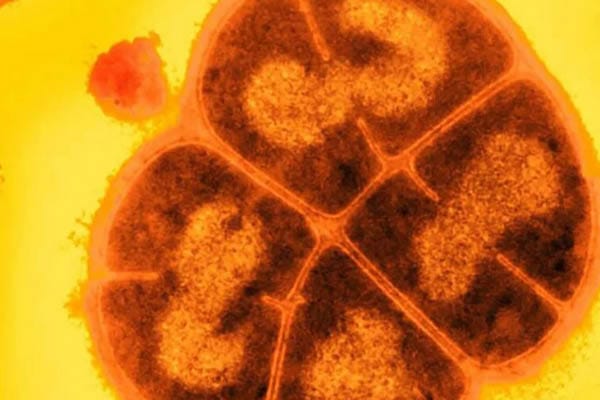
In the realm of extreme survival, Deinococcus radiodurans, aptly nicknamed Conan the Bacterium stands unparalleled. Capable of withstanding radiation doses 28,000 times greater than those fatal to humans, this remarkable microorganism owes its resilience to a potent antioxidant. Scientists have now unraveled the mechanism behind this antioxidant, unlocking potential applications for safeguarding human health both on Earth and in space.
The Secret Behind Extreme Resilience
The antioxidant in question comprises a trio of small molecules, or metabolites, including manganese, phosphate, and a small peptide of amino acids. Together, this combination forms a powerful shield against radiation, surpassing the protection offered by manganese alone or manganese paired with just one other component. Published in the Proceedings of the National Academy of Sciences, the findings provide a groundbreaking insight into radioprotection.
“We’ve long known that manganese ions and phosphate together create a strong antioxidant,” explained study coauthor Brian Hoffman, professor at Northwestern University. “But discovering the added potency brought by the third component is a breakthrough. This study provides the key to understanding Conan the Bacterium, why this combination is so effective and promising as a radioprotectant.”
Implications for Space Exploration
The applications of this discovery could extend far beyond the lab. Astronauts embarking on deep-space missions face high doses of cosmic radiation—a major challenge for human exploration of the solar system. According to the study authors, the antioxidant’s protective properties could be pivotal in mitigating these risks.
Deinococcus radiodurans has already demonstrated extraordinary survival abilities. Guinness World Records names it the most radiation-resistant organism. Remarkably, it endured three years of exposure outside the International Space Station. Previous research coauthored by Hoffman and Michaely Daly, a pathology professor at the Uniformed Services University of the Health Sciences, suggests that if the bacterium existed on Mars, its frozen state could have allowed survival for millions of years.
Decoding Radiation Resistance
Earlier studies revealed a direct link between the levels of manganese antioxidants in Deinococcus cells and their radiation resistance. More antioxidants equate to greater resilience. In laboratory conditions, the bacterium withstood 140,000 grays of X- and gamma-ray radiation—an astonishing 28,000 times the dose lethal to humans.
For their latest research, Hoffman and Daly examined MDP (melatonin-derived protective), a synthetic antioxidant inspired by Deinococcus. Developed by Daly, MDP has already found use in radiation-inactivated polyvalent vaccines, targeting pathogens like chlamydia. The team analyzed how MDP’s components—manganese, phosphate, and a peptide called DP1—protect cells and proteins from radiation damage. When combined, these elements create a ternary complex, forming what Hoffman describes as a “secret sauce” for radioprotection.
A New Frontier for Health and Industry
Dr. Tetyana Milojevic, chair of exobiology at the University of Orléans, praised the study’s insights into creating radioprotective shields using metabolites. While she was not involved in the research, Milojevic emphasized the potential to enhance such shields for broader applications.
Daly shared similar optimism, envisioning more potent manganese-based antioxidants for use in healthcare, defense, industry, and space exploration. On Earth, such antioxidants could provide protection during radiation-related accidents.
Towards a Safer Future
For astronauts, MDP offers a practical solution. Daly highlighted its simplicity, affordability, and nontoxicity, making it suitable for oral administration. This innovation could significantly reduce space radiation risks. Back on Earth, it could serve as a safeguard for those exposed to accidental radiation.
Hoffman and his colleagues are now exploring whether the triple complex of Deinococcus’ antioxidant exists in other organisms. If similar mechanisms are found, they could pave the way for new breakthroughs in understanding and harnessing radiation resistance.
The journey from studying a microorganism’s resilience to developing tools for human protection marks a triumph of scientific curiosity. With Deinococcus radiodurans as the blueprint, humanity inches closer to conquering the challenges posed by radiation—both at home and in the vast expanse of space.
For visit specific news visit again https://khudaniajournal.com

